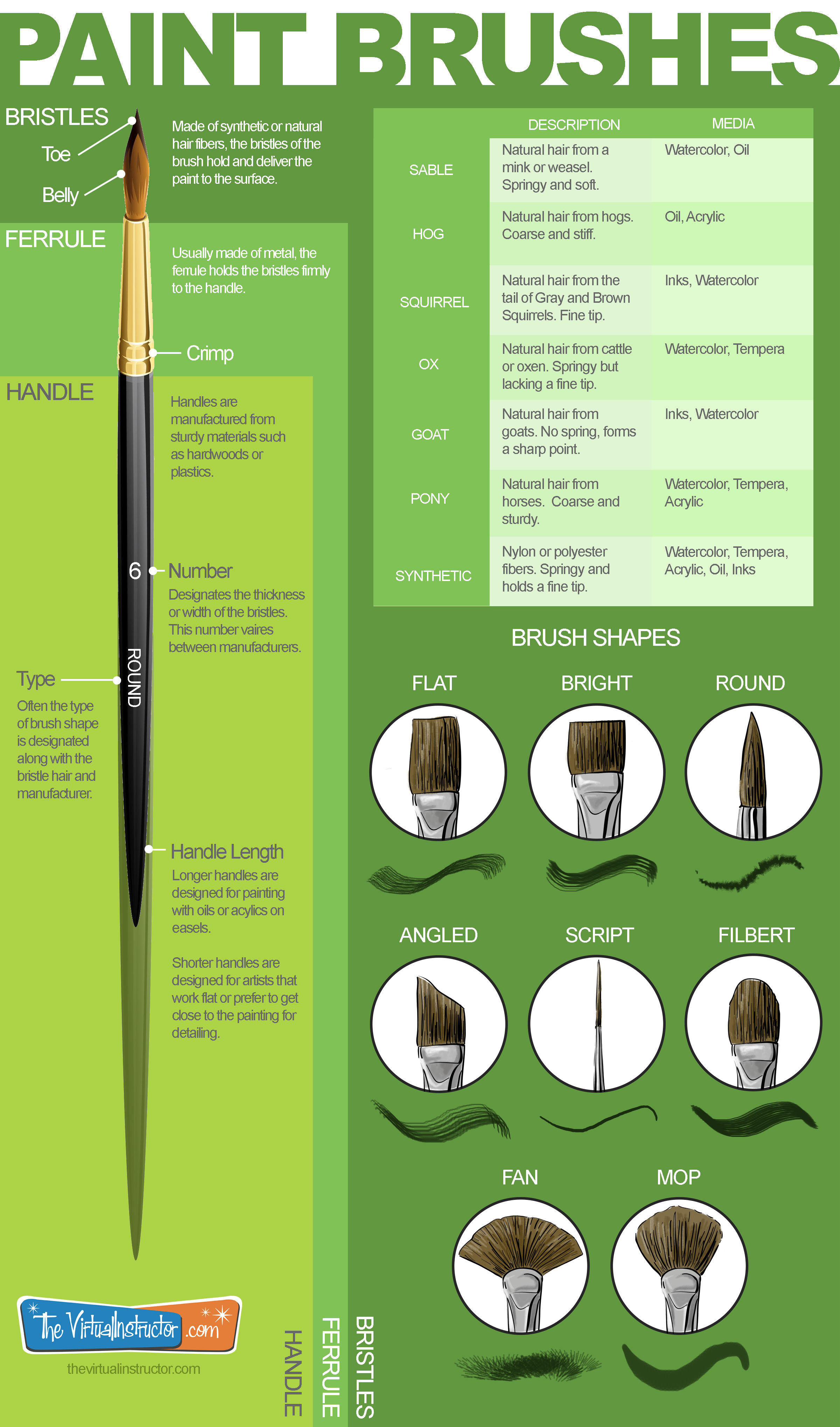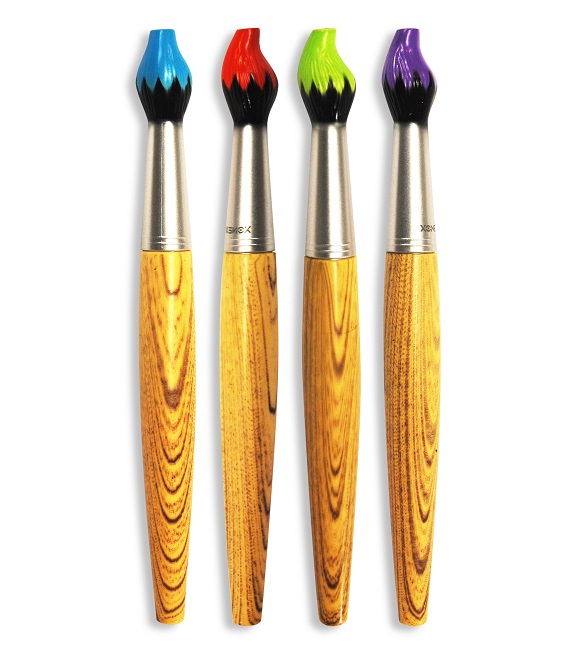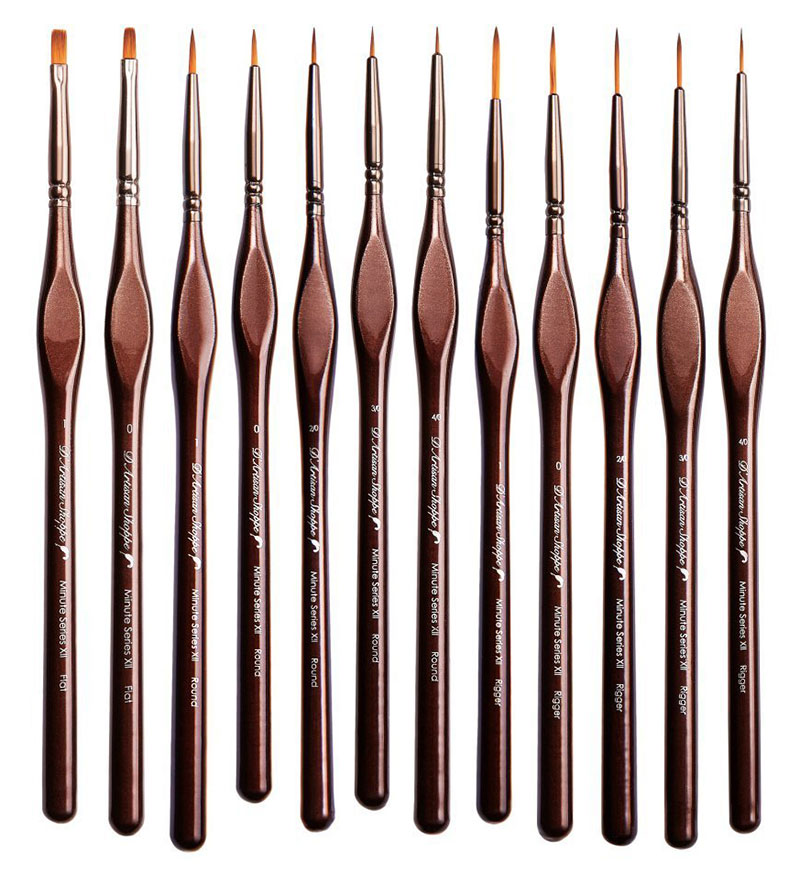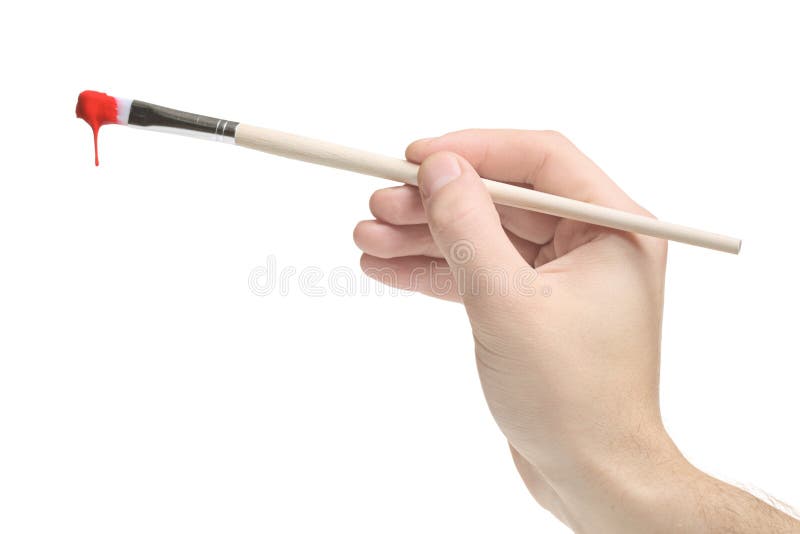A Paint Brush
Background
A paintbrush is a handheld tool used to apply paint or sealers to paintable surfaces. The brush picks up paint with filament, includes a ferrule that is a metal band that holds the filament and handle together and gives the brush strength, a spacer plug within the ferrule which helps the filament sits tightly in the brush and creates a reservoir for paint, epoxy to lock the filament, and a handle which provides comfort and good balance. The paintbrush industry categorizes their products based on the user of the product. Thus, there are consumer grade paintbrushes made for the homeowner who is painting small projects, professional grade paintbrushes for the professional house painter who requires a high-quality, long-lasting brush, and artistic grade paintbrushes.
Find Natural bristle paint brushes at Lowe's today. Shop paint brushes and a variety of paint products online at Lowes.com. Removing the Built-Up Paint. A paintbrush's worst enemy is paint build up.
Paintbrushes vary tremendously based on the quality of components used and are specifically constructed for the application of different paints and varnishes upon certain surfaces. The filament may be either animal bristle or synthetic and the brush quality largely rests on the differences in these materials. Inexpensive animal hair brushes used in lower grade brushes are of unbleached hog bristle, however, the most expensive animal hair brushes are of sable and are used for delicate hand painting. These synthetics vary greatly in quality and may be used for cheap brushes as well as better-quality brushes. Handles are of wood or plastic; the rounder the brush the easier it is to manipulate the brush for intricate movement.
Most paintbrushes are manufactured in a factory. However, the more expensive professional-quality brushes may still be produced in a factory but may be assembled, at least in part, by hand-assembly methods. Those who require delicate brushes for fine oil or watercolor painting may make their own brushes or purchase them from a specialist who produces them to order. These handmade brushes can be very expensive.
History
Very little is known about the invention of the paintbrush. Nineteenth century histories of manufactures indicate that brushes are of relatively recent development. Then, as now, sable brushes were the very best bristle for close hand painting. Prior to the development of synthetics in paintbrushes materials such as rattan, whalebone or even shavings of wood were used in place of bristle for painting jobs that did not require much elasticity within the brush. Before about 1830, nearly all quality brushes were imported but shortly thereafter a number of American companies were founded that could produce paintbrushes rather quickly but without much machinery to assist them. Bristle was cleaned and mixed by hand, brush heads were affixed to the spacer by hand-gluing. A source from 1870 notes that the packing, papering, labeling was all completed by boys and girls. While these factories could produce brushes quickly, the process was not yet mechanized. Specialized machines for mixing, finishing, tapering, gluing, handle-making and attaching brush head to handle over 50 years later. However, fine brushes are still individually made by hand with great care at great cost.
Raw Materials
The filament may be either of animal hair and is most often of long-haired hog bristle, often referred to simply as bristle. Other natural animal hairs used in American brushes include squirrel, goat, ox, badger, and horse-hair. The most expensive animal-hair brushes are hand-made of sable. Synthetic filament used in paintbrushes are produced by extrusion (in which liquid synthetic is pushed through a mold and thus formed) and may be acrylic, polyester, nylon or amalon which is a very inexpensive petroleum-based synthetic. Different synthetics perform better with different kinds of paint so a painter should know the filament material as he or she chooses brushes. Synthetic filament may be of three constructions: solid extrusion, 'x-shaped,' or hollow. Solid extrusion synthetic filament lasts the longest and cleans up the easiest. X-shaped filament gives good performance and is a bit cheaper than solid filament. The hollow filament wears out quickly and is difficult to clean but is quite inexpensive. Consumer-grade paintbrushes may be of hog bristle or synthetic filament; however, water-based paints, such as latex, perform better when synthetic filament is used.
Handles may be either of wood or plastic. Different painters like the 'feel' of specific handle materials; generally, professional painters prefer wood handles whereas the 'do-it-yourself-er' often prefers plastic. Epoxy, a two-part glue consisting of epoxy resin and the other part consisting of a catalyst and curing agent, is required to affix the bristles within a metal band called the ferrule. The ferrule, the metal band between the handle and the bristles, is always of metal and may be tin-coated steel or another inexpensive metal. The spacer plug, either of wood or cardboard, is inserted in the brush head in the middle of the bristles (pushed within the ferrule). This plug provides a well that allows the brush to hold a reservoir of paint after it is dipped within the paint. The paint flows from this well to the brush tips.
The Manufacturing
Process
This process will describe the manufacture of a consumer-grade brush made of hog bristle with a plastic handle.
Mixing the bristle
- 1 First, the bristle (often imported) is brought into the plant in small bundles that can be held in the hand. Each bundle includes bristle of the same length and taper ratio. However, brushes must include bristle of various length and taper ratio. The bundles must be untied and mixed together. As each different size and taper of bristle is unbundled it is placed with all bristles aligned in the same direction on a mixing machine. This machine is a series of belts that move back and forth, folding the bristle in and shuffling them together. This occurs as the bristle drops off the belt and lays onto the top of another belt with that set of bristle, then falls onto another set of bristle, etc. until the bristle is completely mixed (but still aligned in the same direction). This mixing takes about ten minute.
Picking the bristle and adding a
ferrule
- 2 The mixed bristles are then put into a machine that pinches off the proper amount of bristle (determined by weight) to form the size of brush under production. Then, the machine takes the bristle for individual brushes and shoves it into a metal ferrule (an oval band that helps attach and hide the attachment of the bristle to the brush).

Adding the plug


- 3 The bristle and ferrule combination is put on a conveyor belt in which devices for patting the bristle further into the ferrule. When the bristle is pushed halfway into the ferrule the pieces are sent to the plugging station. Here, a wooden or cardboard plug, cut to fit the size of ferrule for the brush width under construction, is automatically shoved into the 'butt end' of the ferrule (the end that will be attached to the handle). The bristle and the plug are patted again to ensure the bristles and plug are against the top edge of the ferrule.
Epoxying the bristles
- 4 The brushes are pulled off the line by hand, put into racks with the ferrule end sticking up, and sent to the gluing station. Here, a worker then injects each butt-end of the brush with an epoxy with a machine that injects a squirt of epoxy by the touch of a trigger. This is done brush by brush with a hand-operated pump. The brush head is essentially complete; it takes about two minutes Most paintbrushes are mass-produced, but more expensive, professional-quality brushes are often hand assembled. Brushes used by the artist are handmade. Mass-produced brushes are either squared or chiseled. Typically, chiseled bristles indicate a higher-quality professional brush. Square construction and trim are often less expensive or used to spread paint over large areas.to pick the bristle, add the ferrule, put in the plug, and epoxy the bristles within the plug and ferrule. The brush head is now set aside to dry.
Finishing the bristles
- 5 After the brush head is made and epoxied the manufacturer must 'finish' the brush head. The head is then run through a series of equipment that clean out all loose hairs that escaped the epoxy. The brush head is also 'tipped' meaning that the ends (that are dipped into paint) are slightly feathered or split so that they are finer and able to pick up paint more easily (the finer the bristles that fewer brush strokes the consumer will see when the paint has dried). The ends may also be tapered. A sanding wheel is used to feather and split the ends and clippers are often used for tapering. Now, the brush is set out to air dry overnight. The machinery and methods used to finish a brush is peculiar to each manufacturer and is part of the unique qualities of a brand-name brush.
Making the handles
- 6 The handles are made earlier and may have come from another manufacturer. Some manufacturers produce their own handles elsewhere in the plant and send them to the brush-making department.
Generally, consumer-quality brushes have plastic handles that are injection molded. To produce such a handle, a mold with two halves is clamped together and molten plastic is injected into the mold. The liquid plastic quickly hardens and the mold is opened. Many handles can be made in a series of molds that are connected. All the plastic handles are attached by a 'stringer' or long, thin piece of plastic that must be broken to disconnect the handles. The handles do not require finishing.
Putting on the handles
- 7 The brush heads are stacked up one on top of another after they are dried. The brush heads are taken, one at a time, and automatically inserted with the plastic molded handle which is forced against the ferrule. After insertion, the handles are nailed or riveted by machine and crimped to the ferrule so the brush head stays securely on the handle.
Packaging
Paint Brush Sales
- 8 The same machine that inserted the handle into the ferrule also takes each finished brush and automatically packages the brushes individually. However, a number of paintbrushes come with minimal or no packaging and are sold in bins or cartons at the point-of-sale. Many brushes have minimal packaging that includes only small cardboard packaging that does not run the length of the brush.

Quality Control
Brushes are extraordinarily varied in quality. Brush quality is determined by the use of materials and the methods of construction and the quality of a brush is generally well-marked on the packaging. Even if a brush is of lower-grade consumer quality, the materials are carefully monitored and chosen for their effectiveness as brush materials. Inferior brushes (and very cheap ones) are produced by using synthetic filament that is thick, untapered and unfeathered as the bristles show every brush stroke. Bristle that is used for consumer-grade brushes is often imported and is inspected once it arrives in the factory. The mixing process and particularly the finishing process ensures that adequate
Brush manufacturers employ brush inspectors who control quality by assessing the product at many stages of production. Furthermore, most American plants encourage the employees to visually monitor quality since so many of the processes described above are accomplished in plain sight and not within a 'black box' of machinery. Employees are asked to pull pieces off the line when they believed the product is inferior.
Byproducts/Waste
The primary byproducts of this manufacturing process are dust created from mixing filaments or bristle, handling plastic handles or ferrules, cutting out wooden or cardboard plugs, etc. Thus, most factories are vacuumed constantly using automatic systems. Epoxies used to secure the bristles within the ferrule and plug should not be inhaled extensively so the epoxies are ducted and filtered. Most of the parts of a paintbrush are recyclable (the ferrule perhaps is not). Plastic handles can be recycled, bristles can be re-mixed. No harmful solvents are used in the manufacture of the paintbrush.
Where to Learn More
The Paint Brush Cover Shark Tank
Books
Gottlieb, Leonard. Factory Made: How Things are Manufactured. Boston: Houghton Mifflin Co., 1978.
Greeley, Horace et al. The Great Industries of the United States. Hartford: J.B. Burr & Hyde, 1872.
A Paint Brush For Paco
Sloan, Annie and Kate Gwynn. Classic Paints and Faux Finishes. Pleasantville, NY: The Reader's Digest Association, Inc., 1993.
Other

Osbom International. http://www.osbom.com .
Wooster Brush Company. 'All About Paint Applicators: Information and Sales Tips.' Wooster, OH: The Wooster Brush Company.
